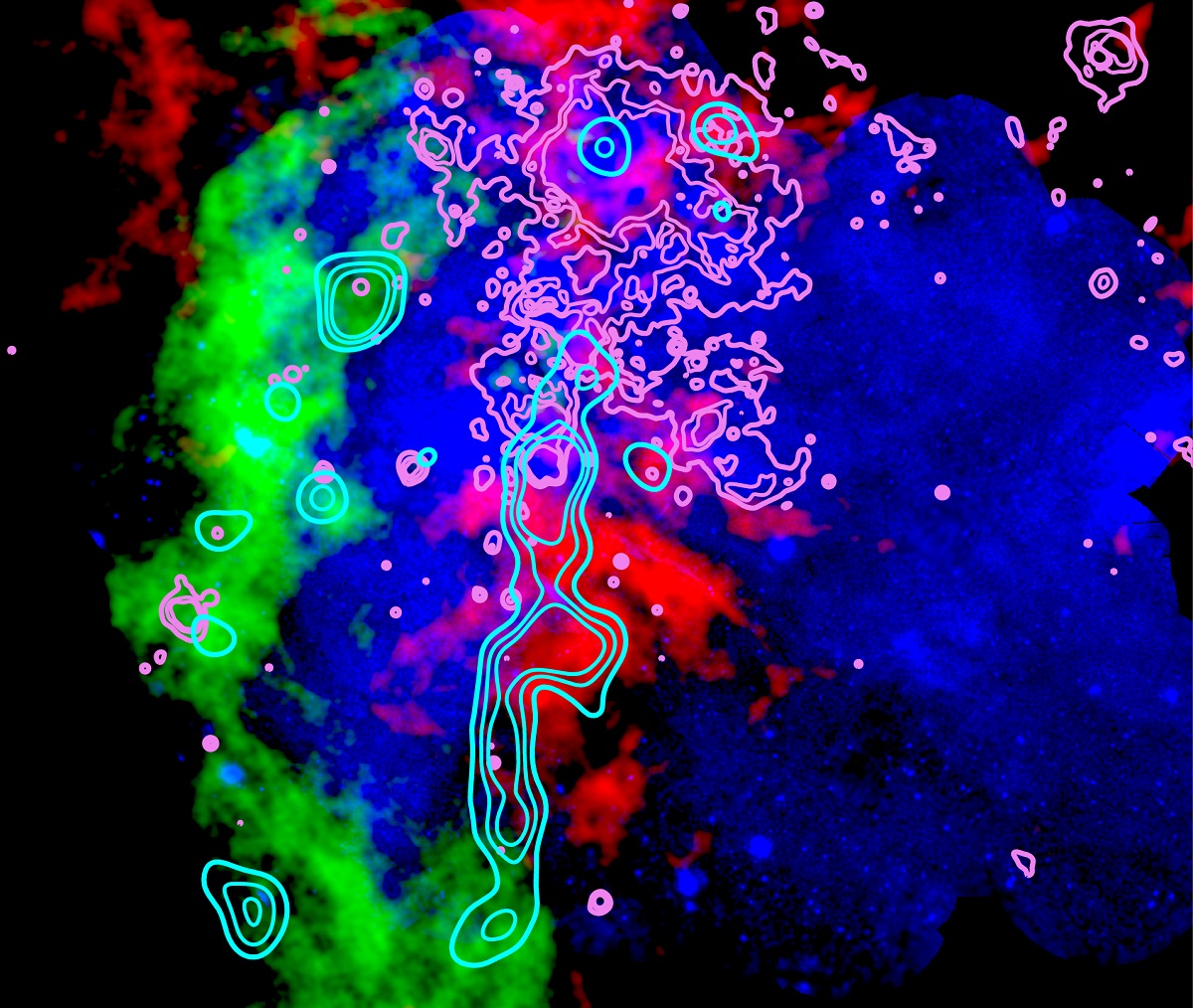The large Magellanic Cloud (LMC) is the largest satellite galaxy of the Milky Way. The LMC is home to many interesting objects such as SN1987A or the nebula 30 Doradus. Also known as the Tarantula nebula, 30 Doradus is an emission nebula and one of the largest and most active star forming regions in the Local Group. The nebula is heated by its young and massive stars.
When looking at the surrounding region of 30 Doradus in the X-ray regime a large structure called the X-ray spur can be seen. This triangular shaped structure is about 1 kpc in size and located to the south of 30 Doradus. The emission from this spur is more energetic than from the surrounding interstellar medium (ISM), therefore indicating that the plasma inside the spur region is hotter than expected from the ambient ISM.
The spur was first discovered in the 1990s by the german ROSAT X-ray mission. Now Scientists from the Dr. Karl Remeis-Observatory studied the X-ray spur using ESAs XMM Newton Observatory. The analysis shows that the temperature of the plasma within the spur is indeed higher and is quite similar to the temperatures observed in 30 Doradus.
In order to find the reason as to why the plasma is heated multiwavelength data was analyzed. As no evidence for young massive stars was found, they can be excluded as possible heating mechanism. However, the analysis revealed that the spur is in fact located between two giant clouds made up of atomic hydrogen. These clouds are colliding with each other, which also explains the heating of the region. The collision itself seems to have started at the position of 30 Doradus and has spread further down south, therefore connecting the X-ray spur with 30 Doradus.

The two cold atomic hydrogen components are shown in red and green. The hot plasma is blue. © Jonathan Knies
The X-ray spur region is shown in the image. The two clouds, which were observed with radio telescopes, are displayed in red and green, while the XMM data, here shown in blue, clearly shows the region where the clouds are colliding. The contours in cyan and magenta trace carbon-monoxide and H-alpha emission, respectively, which are both indicators for new star forming regions. Therefore, it can be expected that the spur will evolve into a new star formation region very similar to 30 Doradus.
Further information:
- FAU press release (EN)
- ESA press release (EN)
- publication in A&A: here
For more information contact:
Jonathan Knies
Jonathan.Knies@fau.de
+49 951 95222 12
Manami Sasaki
Manami.Sasaki@fau.de
+49 9131 85-81019





